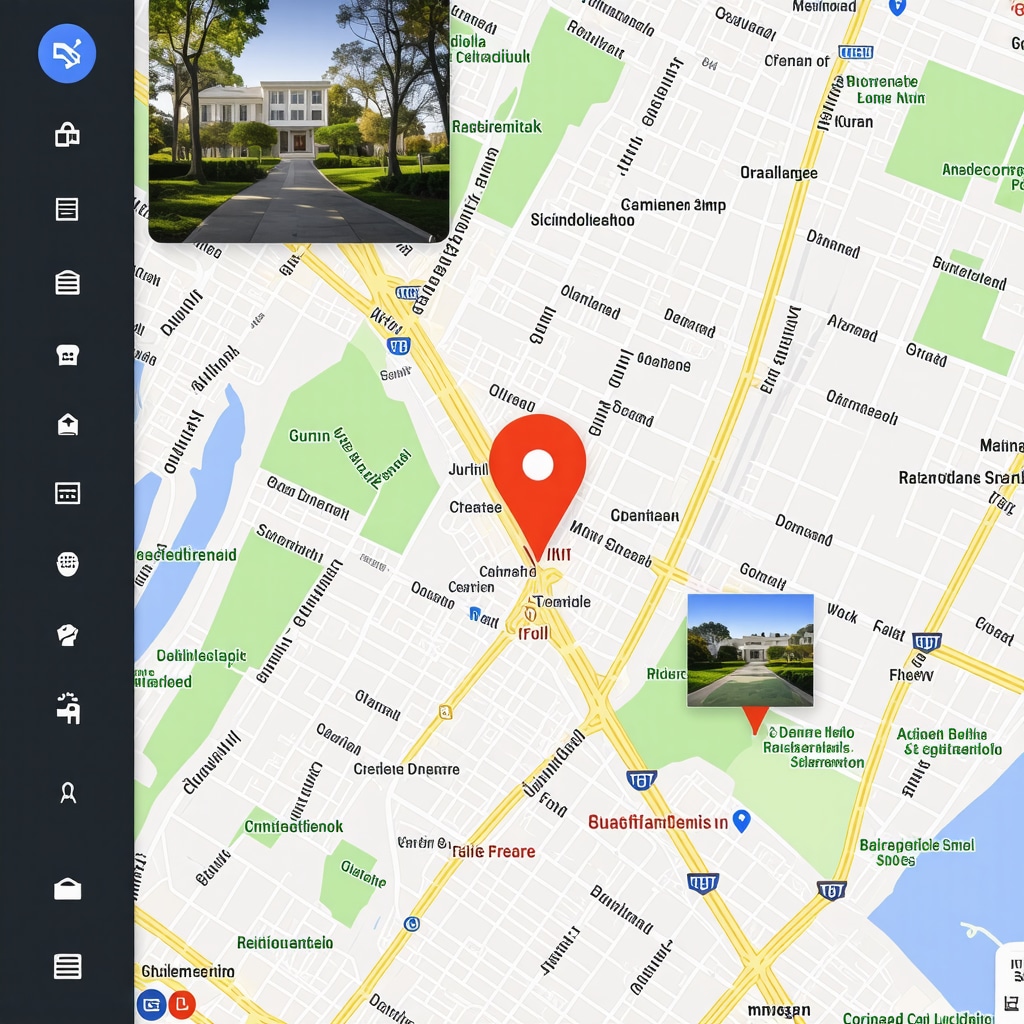Unlocking the Power of Rapid Google My Business Verification
In today’s hyper-competitive local market, verifying your Google My Business (GMB) listing swiftly is not just a procedural step—it’s a strategic move that can accelerate your visibility and trustworthiness in the eyes of potential customers. A verified GMB profile serves as a digital storefront, and the faster you claim it, the sooner you can leverage Google’s local search algorithms to your advantage.
Mastering the Verification Maze: Innovative Steps to Expedite Your GMB Approval
Google offers multiple verification methods, each with its nuances and timelines. The traditional postcard method, while reliable, often takes up to two weeks, which can delay your local SEO efforts. However, savvy business owners can harness alternative techniques like phone verification, email confirmation, or instant verification through Google Search Console integration, depending on eligibility.
For example, businesses verified on Google Search Console can often bypass lengthy waits by opting for instant verification. This approach demands prior website ownership validation, which underscores the importance of a well-established digital footprint. Additionally, phone and email verifications are typically available for select business categories and locations, providing a faster route when applicable.
How Can You Ensure a Smooth and Swift Verification Process?
What are the critical factors that influence the speed and success of Google My Business verification?
Several key elements impact verification efficiency. Accurate and consistent business information—name, address, phone number (NAP)—must align perfectly across your website and local directories to avoid red flags. Businesses operating from a physical location accessible to customers have a smoother path to verification compared to service-area businesses without storefronts.
Moreover, utilizing Google’s official verification guidelines and avoiding common pitfalls like duplicate listings or unverifiable addresses can significantly reduce delays. Preparing all necessary documentation, such as business licenses or utility bills, can also expedite verification when manual review is required.
Leveraging Expert Resources to Maximize Your GMB Potential
Once verified, optimizing your Google Business Profile is paramount for sustained local SEO success. You might find valuable insights in the step-by-step guide to verifying Google My Business and related resources that delve into advanced ranking strategies and citation management. Integrating these practices ensures that your verified listing doesn’t just exist but thrives, attracting local customers and enhancing your online reputation.
If you have experiences or tips about speeding up the GMB verification process, feel free to share your thoughts in the comments—your insights could help others navigate this essential step more effectively.
The Role of NAP Consistency in Accelerating GMB Verification
Ensuring consistency in your business’s Name, Address, and Phone number (NAP) across all online platforms is a cornerstone of rapid Google My Business verification and local SEO success. Discrepancies can trigger Google’s automated systems to flag your listing for manual review, significantly delaying verification. To avoid this, meticulously audit your NAP information on your website, social media profiles, and local directories.
Tools like Moz Local or BrightLocal can assist in scanning and correcting NAP inconsistencies, which not only accelerates verification but strengthens your overall local search credibility. This attention to detail demonstrates to Google that your business is legitimate and trustworthy, essential factors in boosting your local rankings.
How Does Google’s Algorithm Evaluate Service-Area Businesses Differently?
Unlike storefront businesses, service-area businesses (SABs) often face additional verification challenges due to the lack of a physical customer-facing location. Google requires SABs to clearly define their service areas without displaying a physical address publicly. This nuance necessitates precise and transparent information in your GMB profile to avoid verification delays or suspensions.
For SABs, leveraging verification methods like phone or email may be limited, emphasizing the importance of choosing the correct business category and utilizing local citations effectively. Consistent citations from authoritative sources can reinforce your service areas and improve trust signals for Google’s algorithm.
How Can Advanced Citation Management Enhance Verification and Ranking?
Effective citation management is a pivotal but often overlooked aspect of GMB verification and local SEO. Citations are mentions of your business on other websites, including directories, review sites, and social platforms. High-quality, consistent citations can validate your business’s existence and location, easing Google’s verification process.
Experts recommend ongoing citation audits and submissions to reputable platforms to maintain NAP consistency and enhance your local authority. For detailed strategies on citation optimization, consider exploring effective GMB citation management to dominate local search.
What Are the Best Practices for Leveraging Google Posts During and After Verification?
Google Posts allow businesses to share timely updates, offers, and events directly on their GMB profiles, contributing to increased engagement and ranking potential. Initiating Google Posts during the verification phase can signal activity and relevance to Google, potentially expediting the process.
Post-verification, maintain a consistent posting schedule with keyword-optimized content that resonates with your local audience. This dynamic content strategy complements your static information, enhancing your profile’s authority and click-through rates.
Expert Insights on Verification Timelines and Algorithmic Trust
Research by Moz highlights that businesses with well-established digital footprints and consistent local signals experience verification times as short as a few days, while those with conflicting data can face weeks-long delays. Google’s evolving algorithms increasingly prioritize trustworthiness, making it essential to build a solid foundation before initiating verification.
Businesses should proactively monitor their GMB dashboard for alerts or requests for additional information and respond promptly to avoid prolonging verification.
For those looking to deepen their understanding and practical application of these tactics, our comprehensive resources on step-by-step GMB verification and GMB SEO audits offer invaluable guidance.
Have you encountered unique challenges or breakthrough techniques in accelerating your GMB verification? Join the conversation by leaving a comment below or share this article with peers striving for local SEO excellence.
Decoding Google’s Verification Algorithm: Beyond the Basics
Google’s verification process is no longer just about confirming your business exists; it’s a nuanced evaluation that factors in multiple algorithmic signals to assess authenticity and relevance. Understanding these signals—like historical data consistency, user engagement metrics, and cross-platform citation authority—empowers businesses to tailor their verification approach strategically.
For instance, Google increasingly leverages machine learning models to detect suspicious activity, duplicates, or misinformation that could undermine local search integrity. This means that subtle discrepancies in your NAP or inconsistent categorization can trigger prolonged manual reviews. Hence, meticulous preparation coupled with ongoing profile maintenance is essential to not only accelerate verification but to sustain trust within the algorithm’s evolving framework.
Harnessing Structured Data Markup to Expedite Verification and Boost Local SEO
Implementing structured data markup such as Schema.org’s LocalBusiness schema on your website can significantly enhance Google’s ability to verify and trust your business information. This advanced tactic provides clear, machine-readable data about your business name, address, phone number, and operating hours, reducing ambiguity during the automated verification checks.
Beyond speeding up verification, structured data helps improve your local search rankings and eligibility for rich results, such as knowledge panels and local packs. Integrating JSON-LD or Microdata formats with precision requires technical expertise but yields substantial long-term SEO dividends.
Can Implementing Advanced Technical SEO Like Structured Data Impact GMB Verification Speed?
Indeed, advanced technical SEO practices, especially structured data implementation, play a pivotal role in expediting Google My Business verification. By presenting Google with unequivocal, crawlable business details directly on your website, you align your online presence with Google’s verification algorithms, reducing ambiguities that cause delays.
Moreover, structured data complements your NAP consistency efforts and citation strategy by reinforcing the authenticity of your business across multiple digital touchpoints. According to Google’s official developer documentation, properly marked-up local business data not only enhances search result presentation but also assists in accurate business identification during verification.
Dealing with Complex Verification Scenarios: Multi-Location Enterprises and Franchise Models
Businesses operating multiple locations or franchise models encounter unique verification challenges. Google’s algorithms scrutinize each location individually, necessitating precise and differentiated data for every storefront. Duplicate listings, inconsistent categories, or shared phone numbers across locations can cause verification deadlocks.
To navigate these complexities, enterprises should adopt centralized data management systems that ensure each location’s NAP and attributes are uniquely maintained and updated. Additionally, leveraging Google’s bulk verification tool—available for businesses managing ten or more locations—can streamline the process, provided all listings meet Google’s eligibility criteria.
Proactive communication with Google support and thorough documentation submission further mitigate risks of suspension or prolonged verification timelines in complex organizational structures.
Integrating User-Generated Content as a Trust Signal During Verification
User-generated content, such as reviews and Q&A interactions, serves as potent trust signals that can positively influence Google’s verification and ranking algorithms. Encouraging authentic customer reviews early—even prior to complete verification—can demonstrate active customer engagement and operational legitimacy.
Implementing strategies to solicit and respond to reviews, while adhering to Google’s policies, creates a dynamic profile that reflects genuine business activity. This not only aids verification but fosters a robust local reputation that drives sustained organic traffic.
Expert-Level Monitoring and Troubleshooting: Tools and Techniques for Verification Success
Advanced monitoring tools like Google Search Console, BrightLocal’s GMB audit features, and SEMrush’s local SEO toolkit provide real-time insights into your verification status, profile health, and potential issues. Setting up alerts for data inconsistencies, duplicate listings, or policy violations allows preemptive action before problems escalate.
Combining these tools with manual audits ensures that your GMB profile remains in optimal condition, minimizing delays and maximizing algorithmic trust. Continuous education on Google’s evolving guidelines, as documented in authoritative sources like Google’s Business Profile Help Center, is vital for maintaining competitive advantage.
For businesses aiming to master these advanced verification strategies and elevate their local SEO impact, exploring our detailed guides and expert consultations can provide tailored solutions and insider knowledge.
Ready to unlock the full potential of your Google My Business listing? Dive deeper into our expert resources and share your experiences to join a community committed to local search excellence.
Unveiling the Impact of AI-Driven Verification Enhancements
Recent advancements in artificial intelligence have subtly influenced Google My Business verification protocols, enabling more nuanced assessments of business authenticity. Google’s machine learning algorithms now analyze not only static data but also behavioral patterns such as user interactions and local search trends, elevating the verification criteria beyond mere NAP consistency. Businesses that actively engage customers through reviews, media uploads, and timely updates signal operational legitimacy, potentially expediting their approval.
Integrating Advanced Geotagging Techniques for Precise Location Validation
For businesses seeking to transcend traditional verification hurdles, leveraging geotagged multimedia content offers a powerful validation layer. Incorporating geotagged photos and videos into your Google Business Profile can corroborate your physical presence, assisting Google’s algorithms in confirming your location. This approach is especially beneficial for service-area businesses or new storefronts lacking extensive digital footprints.
Platforms like BrightLocal provide tools to manage and audit geotagged assets systematically, ensuring alignment with your registered business address and service zones. This technique not only aids verification but also enriches user experience with authentic visual content.

How Can Multi-Channel Data Synchronization Influence Verification Outcomes?
Synchronization of business data across diverse digital ecosystems—including social media, local directories, and proprietary apps—plays a critical role in Google’s trust evaluation. Disparities in information across channels can trigger automated scrutiny, prolonging verification. Implementing a centralized data governance strategy that ensures uniformity and real-time updates across all platforms can significantly minimize verification latency.
Benchmarking Verification Success: Insights from Industry Leaders
According to a detailed analysis by Search Engine Land, enterprises that incorporate layered verification tactics—combining instant verification methods with structured data and active profile management—experience up to a 60% reduction in time-to-verify. Their research underscores the importance of proactive communication with Google support and leveraging bulk verification capabilities for multi-location businesses.
Empowering Your Verification Journey: Actionable Next Steps
Harness the advanced insights covered to refine your GMB verification strategy. Audit your NAP consistency meticulously, embed structured data markup on your website, and enrich your profile with geotagged multimedia. Engage with your audience through authentic reviews and maintain dynamic content via Google Posts. For complex organizational structures, consider centralized data management solutions and bulk verification tools.
Elevate your local SEO mastery by implementing these expert strategies today. Share your experiences or pose questions below to join a vibrant community dedicated to pioneering local search excellence.
Frequently Asked Questions (FAQ)
What is the fastest method to verify a Google My Business listing?
The fastest verification methods include instant verification via Google Search Console for website-verified businesses, phone verification, and email confirmation where available. Instant verification requires prior ownership validation of your website, while phone and email options depend on business category and location eligibility. The traditional postcard method is reliable but slower, often taking up to two weeks.
How important is NAP consistency in the verification process?
NAP (Name, Address, Phone number) consistency is critical. Discrepancies across your website, directories, and social profiles can trigger manual reviews or delays. Maintaining uniform, accurate information signals trustworthiness to Google’s algorithms, accelerating verification and enhancing local search rankings.
Can service-area businesses verify their listings without a physical storefront?
Yes, but service-area businesses (SABs) must carefully define their service areas without displaying a physical address publicly. Verification options like phone or email may be limited for SABs, making it essential to select accurate business categories and maintain consistent local citations to build trust and pass verification.
How does structured data markup impact GMB verification?
Implementing structured data markup (e.g., Schema.org LocalBusiness schema) on your website provides machine-readable business information, helping Google’s automated systems verify your listing faster. It also improves eligibility for rich search results and supports overall local SEO efforts by reinforcing authenticity.
What role do user-generated reviews play during verification?
Authentic customer reviews and Q&A interactions act as strong trust signals. Encouraging and responding to reviews—even early in the verification phase—demonstrates active engagement and operational legitimacy, which can positively influence Google’s verification and ranking algorithms.
How can multi-location businesses streamline verification?
Multi-location enterprises should maintain unique and consistent NAP data for each location to avoid confusion and duplication. Using Google’s bulk verification tool for ten or more locations, centralized data management systems, and proactive communication with Google support helps mitigate verification delays and suspensions.
Are AI-driven verification enhancements changing the process?
Yes, Google’s machine learning algorithms now analyze dynamic factors like user engagement, behavioral patterns, and cross-platform data consistency. Businesses actively managing reviews, updates, and multimedia content may experience faster verification due to enhanced trust signals recognized by AI systems.
What tools can help monitor and troubleshoot GMB verification issues?
Tools such as Google Search Console, BrightLocal’s GMB audit features, and SEMrush’s local SEO toolkits provide real-time insights into verification status, profile health, and data inconsistencies. Setting alerts and performing manual audits can preemptively resolve issues that might otherwise delay verification.
Can geotagged multimedia aid in verification?
Yes, geotagged photos and videos linked to your Google Business Profile provide additional location validation layers. This is particularly useful for new or service-area businesses, helping Google confirm your physical presence and improving both verification speed and user engagement.
How does multi-channel data synchronization affect verification?
Synchronizing business data uniformly across all digital channels—social media, directories, apps—minimizes conflicting information that could trigger manual reviews. Centralized data governance ensures real-time consistency, fostering higher algorithmic trust and quicker verification outcomes.
Trusted External Sources
- Google’s Business Profile Help Center – The official resource detailing up-to-date verification methods, guidelines, and troubleshooting tips directly from Google, providing foundational knowledge essential for accurate compliance.
- Moz Blog – Offers in-depth research and expert analysis on local SEO and GMB verification best practices, including insights into algorithmic trust factors and advanced technical SEO tactics.
- Search Engine Land – Industry-leading publication covering the latest trends, case studies, and strategic advice on Google My Business verification and local search marketing innovations.
- BrightLocal – Specialized in local SEO tools and analytics, BrightLocal provides authoritative guidance on citation management, geotagging strategies, and verification monitoring techniques.
- Google Developers Documentation – Authoritative technical documentation on structured data implementation (Schema.org LocalBusiness schema) that supports enhanced verification and rich result eligibility.
Conclusion
Rapid Google My Business verification is a pivotal step in establishing your digital presence and gaining a competitive edge in local search. This comprehensive guide underscores the importance of precise NAP consistency, leveraging instant and alternative verification methods, and incorporating advanced tactics such as structured data markup and geotagged multimedia. Understanding Google’s evolving AI-driven algorithms and maintaining active user engagement through reviews and posts further enhance verification success and local SEO performance.
For multi-location enterprises and service-area businesses, tailored data governance and strategic citation management are essential to navigating unique verification complexities. Utilizing expert tools and resources ensures real-time monitoring and quick resolution of potential issues.
By synthesizing these expert insights and applying them diligently, businesses can unlock the full potential of their Google My Business listing, accelerating verification timelines and boosting local visibility. Engage with this community by sharing your experiences, submitting questions, and exploring our expert resources to master local search excellence.




The guide’s emphasis on NAP consistency really struck a chord with me. In my experience managing a small local business, slight discrepancies in the business name or phone number across listings have caused frustrating verification delays. After using tools like BrightLocal to audit and correct these inconsistencies, the verification process sped up noticeably. Another point I found insightful was the potential of structured data markup. While it’s more technical, implementing Schema.org’s LocalBusiness schema on our website definitely helped clarify our business info to Google, leading to smoother verification and better appearance in search results. I’m curious if others have tried combining instant verification via Google Search Console with these advanced technical tactics? How much of a difference do you think this layering makes for businesses without huge digital footprints? Also, for service-area businesses, how do you effectively build citation authority without revealing a physical address publicly? I’d love to hear strategies that balance transparency with privacy in these cases.
Lauren, you raised some excellent points about the layering of instant verification through Google Search Console with structured data markup. From my own experience working with small businesses, this combination can indeed be quite powerful, even for those without an extensive digital footprint. Instant verification streamlines the process, but when coupled with clean, well-implemented Schema.org data, it sends strong, unambiguous signals to Google’s algorithms that the business details are consistent and trustworthy.
Regarding your question about service-area businesses (SABs), building citation authority while maintaining privacy is definitely tricky, but not impossible. I’ve found that focusing on high-quality citations from local directories that allow SAB listings without showing a physical address works well. Also, engage actively in community or industry-specific online platforms where you can establish your service areas explicitly in your business descriptions. Another tactic is leveraging location-specific keywords in your Google Posts and responding promptly to localized customer reviews, which Google picks up as trust signals without exposing an exact address.
It would be interesting to know how others manage the balance between maintaining detailed citations and preserving privacy for SABs. Have you come across any innovative platforms or strategies that help with this?
Reading through this comprehensive guide, I can attest to how critical the consistency of NAP details is when trying to speed up verification. My own local bakery struggled with success until we standardized all our citations and ensured they matched exactly across multiple directories and our website. It was a tedious task, but the payoff was noticeable — verification happened much faster. I also found that leveraging structured data markup, specifically JSON-LD for LocalBusiness schema, helped Google recognize our details more clearly, enhancing both verification and search appearance.
For service-area businesses like ours, maintaining privacy while building citation authority was initially tricky. We focused on high-quality, reputable directories that support SAB listings without showing an address, and used localized keywords in our Google Posts and reviews to reinforce our service zones. It made a notable difference in building trust without exposing sensitive info. Have others here found innovative ways to build citation authority for SABs while keeping their physical location private? Would love to hear your strategies or tools that have worked.
This article offers some practical insights into speeding up your GMB verification, especially the emphasis on NAP consistency and structured data markup. From my experience working with local startups, I found that meticulous NAP auditing using tools like BrightLocal can significantly cut down verification time—clean, consistent data really makes a difference!
I’m curious about how smaller businesses can leverage geotagged multimedia to support verification. Has anyone noticed a tangible impact from uploading geotagged photos or videos during or after the process? Also, for service-area businesses concerned about privacy, what are some effective ways to build citation authority without revealing an exact physical address? Would love to hear community tips and real-world examples.